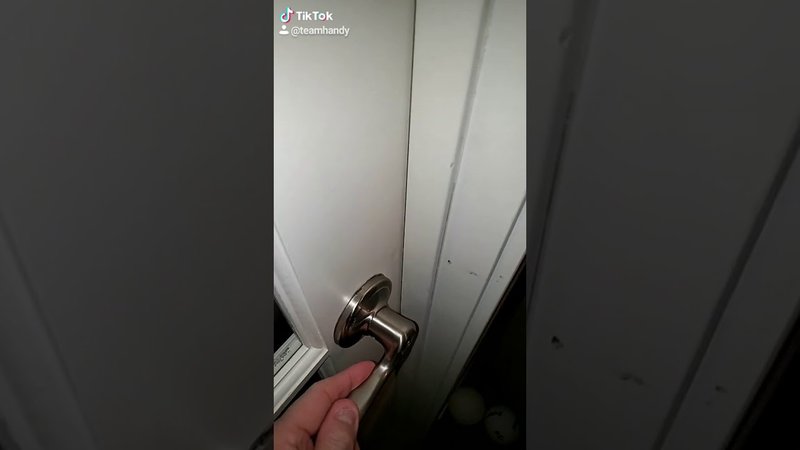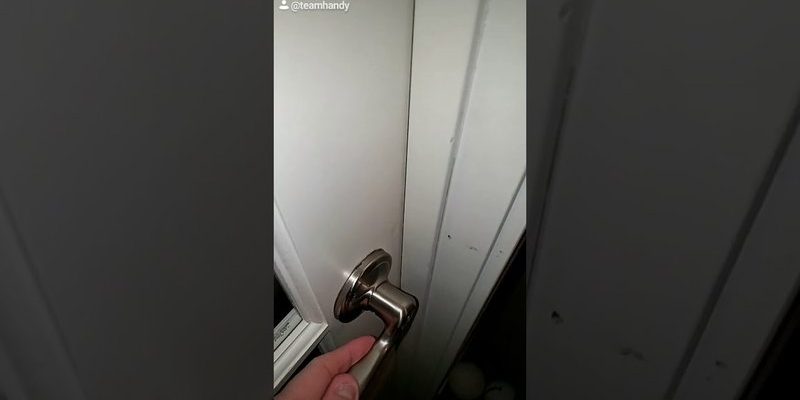
You might not realize this, but a rattle like this can be more than just an annoying sound; it can indicate a deeper issue with your home’s structure or the door itself. So, let’s dive into the “why” behind this common occurrence. Understanding the reasons will help you recognize whether it’s a simple fix or something that merits a closer look.
What Causes a Door Knob to Rattle?
To grasp the situation, we first need to understand how door knobs are designed. When the house vibrates, several factors contribute to that rattling noise. Door knobs are built with a mechanism that allows them to turn smoothly, but they also have some play—meaning they can move slightly within their assembly. This play is intended to create a snug fit, so if your door knob starts rattling, it’s often due to these two main factors: loose components or excessive vibrations.
When vibrations strike, they can create a cascade effect. Even a minor shake might send your door knob into a little jiggle, especially if it’s not tightly secured. A loose screw or mounting plate can amplify this rattle, making it sound like the knob is trying to dance. Think about it this way: if you’re standing on a shaky bridge, even if you’re steady, the vibrations beneath you can send ripples through your body. The same principle applies to your door knob.
Common Sources of Vibrations in Your Home
If your door knob is rattling, it’s important to consider what’s causing those vibrations in the first place. Common sources of vibrations include:
- Heavy Traffic: If you live near a busy road, the rumble of cars and trucks can easily vibrate through your home.
- Appliances: Washing machines, refrigerators, and even air conditioning units can create vibrations that travel through the walls and floors.
- Foot Traffic: Simply walking around the house can lead to vibrations, especially if the floor is wooden or older.
- Construction Work: Neighbors doing renovations or roadwork nearby can cause noticeable shakes.
Each of these sources can contribute to that annoying rattle in your doorknob. When the house shakes, it’s like the knob is responding to external stimuli. If you’ve ever heard a distant thunderstorm rumbling, you know how sound waves can travel. Similarly, vibrations travel through your house’s structure, setting your doorknob into motion.
How the Door Mechanism Works
Now, let’s peek inside the door itself. The doorknob connects to a latch or bolt, which keeps your door securely closed. When you turn the knob, the mechanism pulls the latch back, allowing the door to open. However, when the house vibrates, this latch can also move slightly, creating that rattle.
Think of this mechanism like a rollercoaster. When you pull the handle down, the ride begins, but bumps in the track (like vibrations) can rattle the cars. If the latch isn’t firmly seated or if there’s too much wiggle room, it can lead to that annoying sound.
It’s also worth noting that older houses or even older doorknobs might have more issues with rattling than newer models. Over time, wear and tear can loosen screws and other components, making it easier for vibrations to set off a rattle.
How to Fix a Rattling Door Knob
If the rattling is driving you nuts, here are a few steps you can take to fix it yourself:
1. Check for Loose Screws: Use a screwdriver to tighten any visible screws on the doorknob. Don’t over-tighten—just snug them up enough to reduce movement.
2. Inspect the Latch Mechanism: Open the door and check if the latch is aligned properly with the strike plate. If it’s misaligned, you may need to adjust the strike plate or reposition the latch.
3. Add Padding: If the rattle persists, you could try adding a small piece of felt or rubber padding around the latch. This can help minimize movement and cushion the vibrations.
4. Replace Old Parts: If your doorknob is old and showing signs of wear, consider replacing it altogether. A new doorknob often comes with better mechanisms that reduce rattling.
By following these steps, you should be able to quiet that rattling door knob and restore peace to your home.
When to Call a Professional
Sometimes, the rattle can be a symptom of larger issues. If you notice that your door is sticking, not closing properly, or if the rattle persists despite your best efforts, it might be time to call in a professional.
Here are signs that might indicate a more serious problem:
- Widespread Vibrations: If multiple doors or fixtures in your home are vibrating or rattling, it might indicate structural issues.
- Structural Cracks: Look for any cracks in your walls or ceiling that might suggest foundation problems.
- Doors Not Closing Properly: If your door won’t latch or stays open without extra force, it’s best to get it inspected.
Being proactive about these issues can save you time and money in the long run. Don’t hesitate to reach out to a handyman or contractor if you suspect there’s more going on than just a rattling knob.
A rattling door knob can feel like a quirky annoyance, but it’s actually a window into what’s happening in your home. Whether it’s a simple fix like tightening screws or a sign of a bigger problem, you now have the tools to investigate. By paying attention to the sounds and vibrations around your house, you can ensure your home stays comfortable and secure.
Remember, just like your door knob reacts to vibrations, your awareness of these little nuances can help you maintain a peaceful living environment. So next time you hear that rattle, you’ll know exactly what’s going on and how to handle it!
